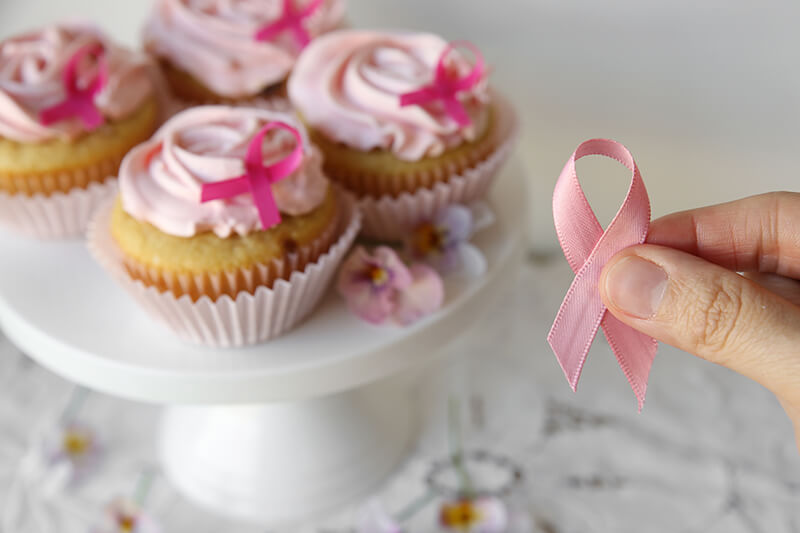You probably know cancer develops due to the uncontrolled growth of cells. Breast cancer is the most common cancer in women and receiving increasing attention. It is the second most dangerous cancer after Lung Cancer.
Breast cancer forms 12% of new cancer cases of which close to 25% are women. These cancerous cells divide more rapidly than healthy cells. Breast cancer may cause symptoms or sometimes they aren’t noticed. But sometimes it can have strong symptoms and we fail to identify it. Your breast goes through various changes during your lifetime due to hormones, menstrual cycle, pregnancy, breastfeeding, and menopause.
Don’t get confused by the natural changes and breast cancer.
In this article, you will learn signs of breast cancer that will make you aware of it.
- Swelling of breast, the main tissue structures that make breasts are- the milk duct, glandular tissue, fat tissue, and connective tissue. Fat tissues of the breast are related to variations that can change fluid volumes. Some women have different sizes of both breasts. But an unusual change in shape or size of the breast can be a sign of breast cancer. Infections or fluid buildup in the breast tissue can also result in breast swelling. Less commonly breast cancer causes swelling. It can cause swelling in your entire breast area. This type is known as inflammatory breast cancer. In this case the breast shows redness, and tenderness and might have pain.
- Changes in the skin texture of breast, breast cancer causes changes in the skin cells which result in texture changes. In most cases, it is due to inflammation. These texture shifts include: Any area of the breast’s skin thickening and the scaly texture around the nipple and areola. These variations may also produce itching, which we connect with breast cancer but usually, they are not. Texture variation can be due to underlying skin conditions such as eczema and dermatitis. But we should not ignore such signs that aren’t normal body conditions.
- Discharge from nipple, discharge from the nipple is normal in case you are breastfeeding. In the majority of situations, it can be severe. The discharge may be thick or thin and also have a range of colors from clear to milky to yellow, green, or red. The discharge which is bloody or pinkish is not normal and possibly shows the existence of breast cancer. Other signs that state nipple discharge is abnormal discharge from only one breast and discharge that occur automatically without anything stimulating, irritating, or touching your breast. A rare form of breast cancer that results in nipple discharge is known as Paget’s disease. This disorder grows in the ducts of the breast and then transfers to the nipple.
- Dimpling of the breast, skin dimpling is a common sign of inflammatory breast cancer. Lymph vessels in the skin are blocked in this form of cancer. Dimpling’s have an appearance like a lump in the breast, a change in skin color or texture, a change in the appearance of the nipple, or clear or bloody fluid that leaks out of the nipple. There is a condition called fat necrosis which causes dimpling but it is not related to breast cancer. Skin dimpling may have some harmless reasons. If you notice something strange make sure to consult with a doctor so you can find out why it occurred.
- Inverted nipple, an inverted nipple simply means the nipple is in an inward direction or usually in a different direction. Some people are born with an inverted nipple, others develop in later life stages. Cells behind the nipple can cause changes to it if they are related to breast cancer. The appearance of the nipple can alter during ovulation or the menstrual cycle. Nipple sensitivity can be different among everyone but inverted nipples feel more sensation than protruding nipples. It’s possible that inverting one or both of your nipples is an indication of breast cancer.
- Redness in the breast, although redness can be signs of other medical conditions, sometimes they can be early symptoms of breast cancer. Redness or red spots are associated with inflammatory breast cancer; they are rare but aggressive. If you notice any such condition, a quick diagnosis will be best for you. Breast cancer produces alterations to the skin that appears discolored or damaged. The skin could be red, purple, or have a bluish tint emerge. Red or hot spots on the breast covering the entire area can be signs of inflammatory breast cancer.
When you need to consult a doctor
You should not panic and be afraid if you notice any changes in your breast. Changes in the breast are often due to many reasons like hormonal imbalance, infection, and aging.
You should be more conscious of what is happening in your body at any stage or condition. If you feel unnatural about things, consultation with a doctor is always a good choice.
The symptoms mentioned above are an alert to visit a doctor especially if the changes are not related to the following:
- Breast injury
- Infection
- Previous illness
- Menstrual cycle
A doctor can study and check all the symptoms of breasts and suggest further diagnosis if necessary. Doctors may suggest a breast exam, mammogram, breast ultrasound, or breast magnetic resonance imaging (MRI) to find out its main cause.
Takeaway
Always remember that signs and symptoms can show some other issues than breast cancer but it’s crucial to examine and figure out the problem.
Many circumstances can lead to changes in the breast, including infection, cysts, dermatitis, eczema, and hormonal imbalance. Consulting a doctor for prognosis will help you to understand if the changes are normal or sign to worry.
If you already have breast cancer then, it can be more tricky to distinguish the inoffensive from the harmful. You should be conscious and pay attention to your body and maintain regular checkups.
We often ignore such symptoms but little awareness can save you from a big dilemma.
Article Submitted by Pranjali Kohad, Health Content Writer
Pranjali has also contributed her article on 7 Things Women Should Know About Menopause

